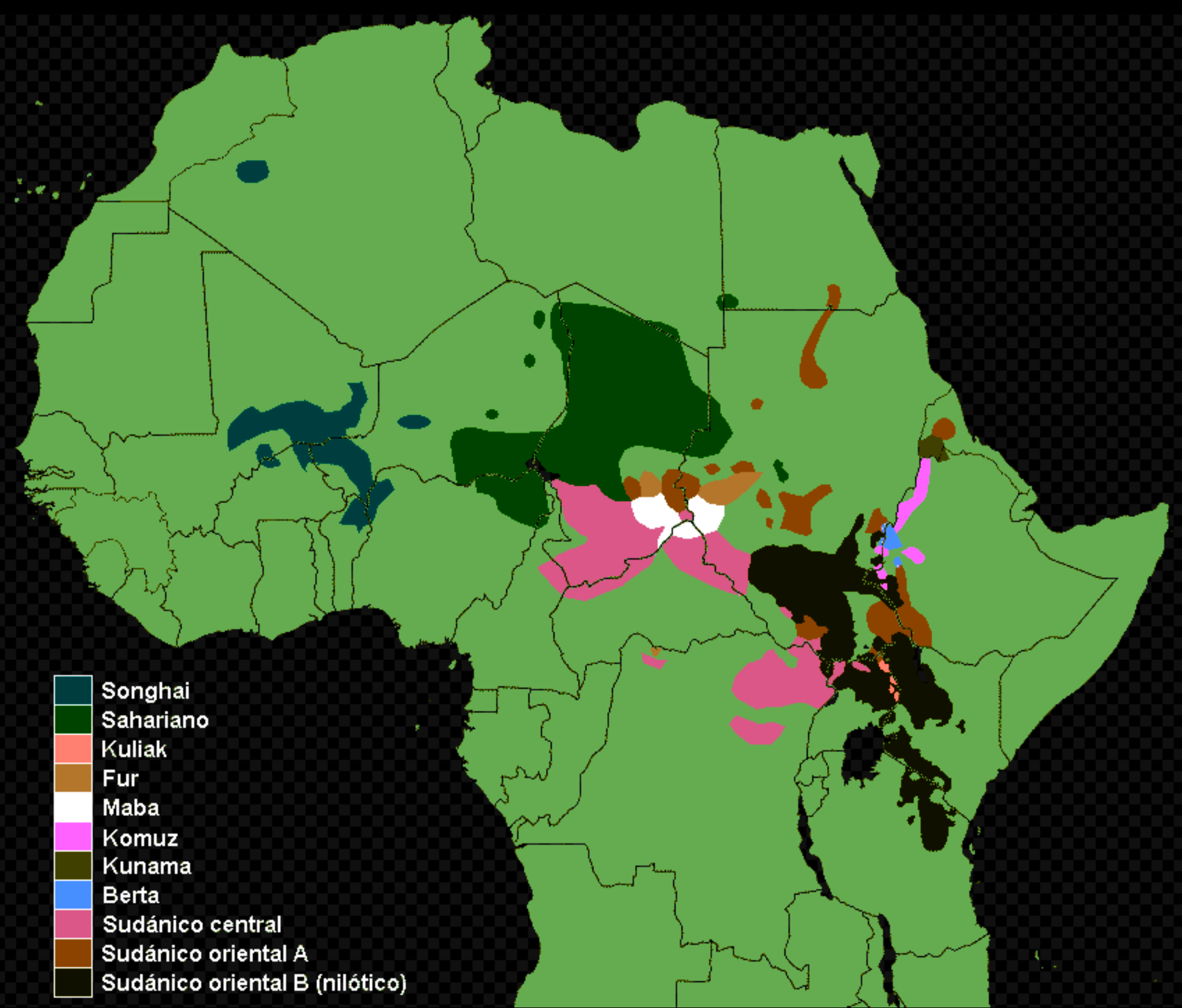Nilo-Saharan Language Group Map


Alex Cartwright
Senior Cartographer & GIS Specialist
Alex Cartwright is a renowned cartographer and geographic information systems specialist with over 15 years of experience in spatial analysis and data...
Geographic Analysis
What This Map Shows
This map illustrates the distribution of the Nilo-Saharan language group, a fascinating family of languages primarily spoken in various regions of Africa. It highlights the areas where these languages are prevalent, showcasing the rich tapestry of cultural and linguistic diversity across the continent. Covering a vast territory from the southern parts of Egypt to the northern regions of Tanzania, the map provides a visual representation of where these languages are spoken, giving us insight into the peoples and cultures that use them.
Deep Dive into Nilo-Saharan Languages
The Nilo-Saharan language family is one of the major language groups in Africa, comprising over 200 languages. This group is divided into several branches, including the Eastern, Western, Central, and Saharan branches. Interestingly, the Nilo-Saharan languages are not only diverse in terms of the number of languages but also in their linguistic features.
For instance, some of the prominent languages within this family include Luo, Dinka, and Maasai, each with its unique grammar and phonetics. Did you know that the number of speakers of Dinka alone is estimated to be over 1 million? This language is primarily spoken in South Sudan and plays an essential role in the identity of the Dinka people.
What's fascinating is that the Nilo-Saharan languages have been influenced by neighboring language families, such as Afro-Asiatic and Niger-Congo, due to historical interactions among different ethnic groups. These influences can be seen in vocabulary and syntax, demonstrating the dynamic nature of language evolution.
Another vital aspect of Nilo-Saharan languages is their role in oral traditions. Many of these languages have rich oral literature, including proverbs, stories, and songs, which serve as vehicles for cultural expression and the transmission of knowledge from one generation to the next. The preservation of these languages is crucial, as they encapsulate the histories and values of the communities that speak them.
Regional Analysis
When we analyze the regions depicted in the Nilo-Saharan Language Group map, we can see distinct linguistic landscapes. In East Africa, for example, languages such as Maasai and Samburu are prevalent among the Maasai people, who are known for their unique cultural practices and pastoral lifestyle. Conversely, in the western regions, languages like Luo are spoken by communities along the shores of Lake Victoria, where fishing and agriculture are central to their way of life.
Furthermore, the Central and Saharan branches introduce us to languages spoken in remote areas, such as the Nuer language in South Sudan and various languages in the Sahara desert regions. These areas often face challenges such as political instability and climate change, which can threaten the survival of these languages and the cultures they represent. The map not only highlights linguistic diversity but also underscores the varying degrees of vulnerability faced by these languages and their speakers.
Significance and Impact
Understanding the distribution of the Nilo-Saharan languages is crucial for several reasons. Firstly, it sheds light on the cultural identity of numerous African communities. Language is a cornerstone of cultural heritage, and the survival of these languages is integral to preserving traditions, knowledge, and community cohesion.
Moreover, as globalization continues to impact indigenous languages worldwide, mapping the Nilo-Saharan languages helps raise awareness of the linguistic diversity at risk of extinction. Initiatives aimed at documenting and revitalizing these languages can be informed by such visualizations, ensuring that future generations can learn and appreciate their linguistic heritage.
In conclusion, the Nilo-Saharan Language Group map is more than a visual representation of where languages are spoken; it encapsulates the history, culture, and identity of countless communities across Africa. As we continue to navigate an increasingly interconnected world, recognizing and valuing linguistic diversity becomes ever more essential. The future of these languages depends not only on their speakers but also on our collective commitment to preserving and celebrating this rich cultural tapestry.
Visualization Details
- Published
- September 19, 2025
- Views
- 62
Comments
Loading comments...